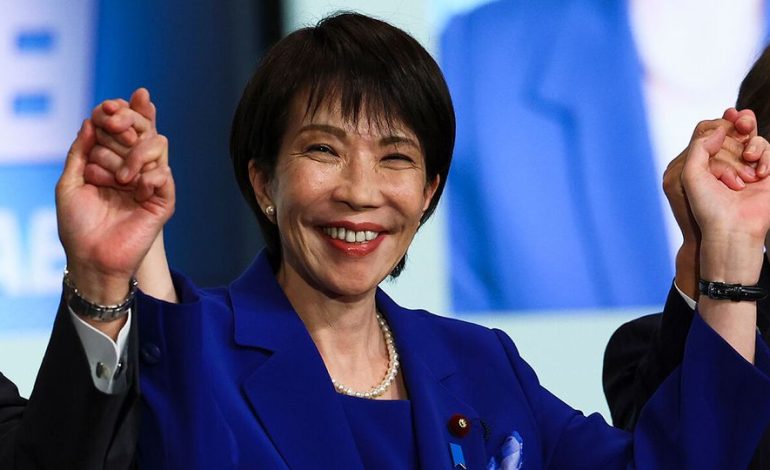Japan’s ruling party just picked a fighter. Sanae Takaichi, a hard-line conservative and former economic security minister, is poised to become the country’s first female prime minister after winning the Liberal Democratic Party’s leadership. At 64, she inherits a government short on votes, short on patience from the public, and long on urgent problems — starting with inflation at home and tricky diplomacy abroad, not least with Donald Trump back in the White House.
Takaichi’s path runs through a mid-October parliamentary vote. The LDP no longer holds outright control in either chamber after a string of losses, but it’s still the dominant force in the lower house and the opposition is splintered. That math makes her the heavy favorite. Her first political reality check, though, is the price surge squeezing households. She needs quick, credible relief to stop the party’s slide — without lighting a fire under already-jittery bond markets.
Abroad, she’s framing the US alliance as the anchor of Japan’s security and diplomacy, and says she wants to deepen trilateral ties that include South Korea, Australia and the Philippines. Trump congratulated her on X as Japan’s “first female Prime Minister,” calling her “highly respected,” and she replied that she hopes to work with him to strengthen the alliance and push a “Free and Open Indo-Pacific.” She’s also said she’ll honor the tariffs and investment deals struck between the Trump administration and outgoing prime minister Shigeru Ishiba’s government — another early signal of continuity.
It’s at home where the political weather looks roughest. Takaichi is a staunch heir to Shinzo Abe’s conservative vision — regular visits to Yasukuni Shrine and a revisionist take on wartime history included. That plays with nationalist voters, but it’s alienating the LDP’s longtime coalition partner Komeito. In a rare rebuke to their 26-year partnership, Komeito leader Tetsuo Saito told her his party has “big worry and concern” about her positions and won’t stay unless she softens them. That leaves Takaichi with an unenviable choice: tack to the center to keep the coalition intact and risk losing her hawkish base, or double down on ideology and govern as a minority by cutting issue-by-issue deals with opposition parties.
Her first personnel moves show who helped put her there — and who might restrain her. She tapped party heavyweight and kingmaker Taro Aso as LDP vice president and named former finance minister Shunichi Suzuki secretary-general. Markets read that as a possible brake on a spend-heavy agenda even as they wager on stimulus: equities surged and the yen slumped after her win, while long-dated Japanese government bond yields popped to multi-decade highs on fears of wider deficits. Aso has a record of preaching fiscal discipline even while backing “Abenomics,” and his faction’s backing gives him pull inside her operation.
Coalition shopping has already started. Aso has sounded out the centrist Democratic Party for the People about cooperation, and Takaichi is openly rewarding allies. Toshimitsu Motegi — close to Aso and a veteran of the foreign and trade briefs — is in the frame to be top diplomat. She’s also floated promoting former Abe-faction lawmakers who were caught up in slush-fund scandals, a trial balloon that drew a sharp “totally unthinkable” from opposition leader Yoshihiko Noda. Another potential partner, the Japan Innovation Party, had been open to a coalition under rival Shinjiro Koizumi; after Takaichi’s victory, that prospect is murkier.
Diplomatically, her instincts come with risks. Yasukuni visits and history talk could upend the fragile thaw with Seoul and rile Beijing just as she says she wants to expand regional security partnerships. At the same time, she’s likely to court Trump — possibly hosting him for a summit during his Asia swing later this month — while trying not to get boxed in by Washington’s tariff politics.
The immediate to-do list is brutally simple but hard to execute: give voters tangible relief from rising prices; calm bond markets unnerved by talk of big spending; hold the US alliance steady while avoiding self-inflicted fights with neighbors; and stitch together a working majority without blowing up the LDP-Komeito marriage. If she can thread that needle, Takaichi could turn a historic first into a durable mandate. If not, Japan’s first woman at the top may also be one of its shortest-lived.
The Financial Times, the Economist, AP, and Reuters contributed to this report.








The latest news in your social feeds
Subscribe to our social media platforms to stay tuned